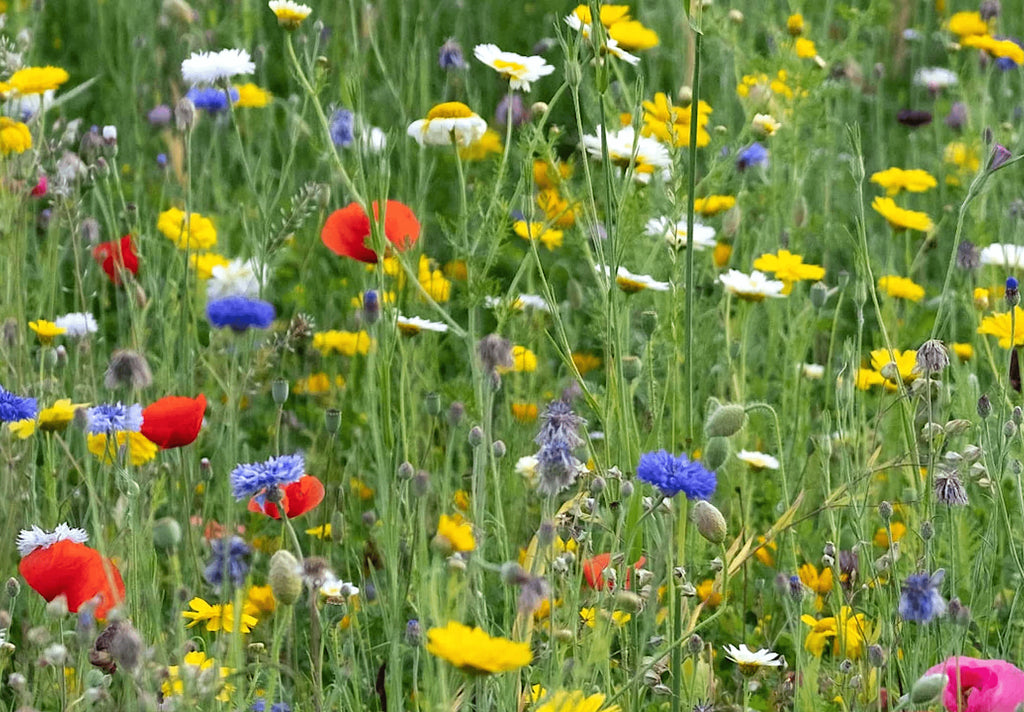Transforming Your Grass Lawn into a Wildflower Meadow
Posted by PURE SEEDS

Transforming a conventional lawn into a vibrant wildflower meadow can be a rewarding project. There are two main approaches: a longer, more natural method and a quicker, direct alternative.
However, one common query arises: "Can I simply scatter wildflower seeds over my grass and expect them to flourish?" The straightforward answer is no. Without proper preparation (grass removal), you might see a sparse emergence of cornflowers and chamomile amidst a sea of dominant grass, particularly if Ryegrass is present, which is known for its competitive nature. You have to remove as much grass as possible to give wildflower seeds the space and resources they need to thrive.
The Longer, Natural Method
This approach involves initially sowing Yellow rattle, a species known for its ability to suppress grass growth naturally. By integrating Yellow rattle into your lawn, you gradually reduce the grass dominance, paving the way for a more diverse wildflower and meadow grass mix. This method, while effective, requires patience, as it typically unfolds over the course of a year. So no wildflowers in the first year and we've found even the best gardeners struggle to get the seed to establish. It's the reason why we advocate the following method for planting wildflowers where grass turf is already established.
The Quick and Efficient Solution
For those seeking more immediate results, there's a straightforward strategy that involves less waiting.
It requires you to either
1a. rotavate the grassy area (you can rent or borrow the little push along machines to do this), which will break up the turf and create clumps of grass. These clumps should be removed to prepare the site.
1b. Or cut out the grass out in squares using a shovel. This takes more work than a rotavator (also known as a tiller).
2. Following this; a thorough raking smooths the soil surface, creating an ideal bed for wildflower seeds.
3. Add a mix of pure wildflower seeds (no grass).
Using this quicker method, it's recommended to sow a pure wildflower seed mix, without additional grass seeds. As the wildflowers establish, some of the original lawn grass may re-emerge. However, rather than competing, these grasses serve as a natural support structure for the new wildflower species, such as cornflowers or poppies, aiding in their growth and stability. So a few remaining grasses wont hurt.
Post-Planting Care
Once planted, this transformed meadow requires minimal maintenance.
1. Wait for the flowers to die back and seed pods will appear.
2. Wait for a dry day and cut the meadow.
An annual cut in October is generally all that's needed. It's important to leave the cuttings on the ground post-cutting, as they help in reseeding, ensuring the meadow's longevity and continued bloom.
By choosing between these two methods, homeowners can efficiently turn a simple lawn into a flourishing wildflower haven, enhancing biodiversity and beauty with minimal effort.